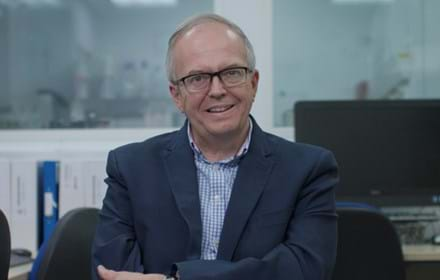
Hypo awareness education programme launched
An educational programme has been launched with the aim of raising awareness about the risks of hypoglycaemia for people with diabetes.
Dangerous falls in blood sugar levels, known as hypoglycaemia (or hypo for short), is a complication of type 1 diabetes that can make people feel unwell or confused. During a hypo blood sugar is used up too quickly, which means it can rapidly drop.

A better understanding of how to avoid hypos can help people manage type 1 diabetes
The Hypo Awareness Programme has been produced after feedback was received by more than 7,500 people with diabetes in the UK.
The online course provides people with diabetes essential information on identifying and dealing with hypoglycaemia – a worrying and, at times, life threatening condition that many people with type 1 diabetes who are insulin dependent and those on hypoglycaemic medication live with on a daily basis.
The website features clear information on early warning signs and symptoms along with coping mechanisms and strategies, in order to help people with diabetes (and family members and friends) to reduce the fear and concern of experiencing a hypo.
A lack of hypo awareness can have serious implications for people with diabetes, it can affect their ability to obtain a driving licence and can cause significant anxiety.
On completing the online Programme nearly 90% of participants felt confident in managing hypoglycaemia (an increase of 32% from before taking part in the course) with 94% knowing the cause of hypoglycaemia (only 75% pre course) and 93% being aware of the signs and symptoms (76% before taking part).
Hypoglycaemia happens when the level of blood sugar present in the blood falls below a certain point – normally 4mmol/L – and can be caused by a variety of different factors such as taking too much insulin, energy output exceeds the glucose generated from food intake, illness and drinking alcohol.
The main symptoms of hypoglycaemia are sweating, fatigue and feeling dizzy and can also include or progress to feeling week, feeling hungry, an increased heartbeat, blurred vision, confusion, temporary loss of consciousness and, in extreme cases, coma.
Mild hypoglycaemia can generally be treated by eating or drinking 10-20g of sugar – which is why many people with diabetes carry glucose tablets with them. Severe hypoglycaemia often needs help from a family member or doctor.
Knowing and being aware of the symptoms of hypoglycaemia may allow people with diabetes to get treatment quickly. Measuring blood sugar levels and eating regularly is key in addition to being aware of how food and exercise affects blood sugar levels.
Support DRWF by making a donation here
Find out more about DRWF-funded research here
Find out more about DRWF fundraising here
For latest update follow DRWF on Facebook, Instagram and Twitter
To receive the charity’s latest bulletins as they become available, please sign up here
Read DRWF diabetes information leaflets here
Join the Diabetes Wellness Network here
I would like to make a regular donation of
I would like to make a single donation of
There are lots of ways to raise money to support
people living with all forms of diabetes.
Bake, Swim, Cycle, Fly ... Do It For DRWF!
Fundraise with us
Recent News


